|
This adult Ross’s Goose image was created with the Gitzo 3532 LS carbon fiber tripod, the Mongoose M3.6 head, the Canon EF 600mm f/4L IS II USM lens, the Canon 2x EF Extender III (Teleconverter), and the Canon EOS-1D X. ISO 400: 1/1600 sec. at f/10 in Manual mode is the equivalent of the standard ISO 400 exposure for brilliant whites in bright sun: 1/2500 sec. at f/8. Central sensor (by necessity) Expand/AI Servo Rear Focus AF on the side of the bird’s breast active at the moment of exposure. Click here if you missed the latest version of the Rear Focus Tutorial. Click on the image to see a larger version. |
Your Goose is Cooked…
If you do not know how to identify and age the geese at Bosque
There are several goose species at Bosque del Apache National Wildlife Refuge in San Antonio, New Mexico. Snow Geese. often numbering in the tens of thousands, predominate. There are two morphs or forms of Snow Goose at Bosque, the white morph, by far the most abundant in New Mexico, and the blue morph, much less common here. Note: in some wintering locations the flocks may be 50-50, half white snows and half blues. At Bosque blue morph snows make up less then 2% of the Snow Goose populations in a given year. The next most abundant goose is Ross’s Goose, smaller than snows and much more agile fliers. Ross’s numbers vary from year to year. This year is a very good year with probably more then 5% of the white geese being Ross’s. For me, this makes Ross’s a more difficult and rewarding subject than the more common and far more numerous white morph Snow Goose. But you cannot photograph what you cannot see. 🙂 There is a blue morph Ross’s but it is exceedingly rare; I have never seen one anywhere. Many folks have no clue as to how to separate adult white Snow Goose from adult Ross’s Goose. See item next.
As a bird photographer, learning to ID and age the species you encounter is a big plus. There were many folks trying to pick off single birds from the huge flock floating on still blue water yesterday afternoon–a rather rare occurrence at Bosque BTW; most had no idea that they had many of the rarer Ross’s right in front of them.
|
This adult Snow Goose (white form or morph) image was created with the Gitzo 3532 LS carbon fiber tripod, the Mongoose M3.6 head, the Canon EF 600mm f/4L IS II USM lens, the Canon 2x EF Extender III (Teleconverter), and the Canon EOS-1D X. ISO 400: 1/1600 sec. at f/10 in Manual mode is the equivalent of the standard ISO 400 exposure for brilliant whites in bright sun: 1/2500 sec. at f/8. Central sensor (by necessity) Expand/AI Servo Rear Focus AF on the bottom of the bird’s long neck active at the moment of exposure. Click here if you missed the latest version of the Rear Focus Tutorial. Click on the image to see a larger version. |
Ross’s Goose vs Snow Goose ID Tips
The key to separating these two species is the size and shape of the bill. Snow Goose has a much larger bill with, as you can see in the images above, a large grinning patch, the long black shape that separates the upper and lower mandible. Ross’s Goose has much shorter, stubbier bill. To me they look stub-nosed. Bill coloration is usually all pink for snow, pink with greenish or grayish warts or tubercles at the base. The Snow Goose in the image above has a bit of an atypical yellow tinge to it. The differences in coloration of the bills can be seen only with good optics or in close-up images like those here. With practice it is easy to learn to pick out the Ross’s Geese in flight by both there stub-nosed look and their faster, more acrobatic flight. It is not uncommon to see the turn upside down in flight.
|
This resting juvenile Snow Goose (white form or morph) image was created with the Gitzo 3532 LS carbon fiber tripod, the Mongoose M3.6 head, the Canon EF 600mm f/4L IS II USM lens, the Canon 2x EF Extender III (Teleconverter), and the Canon EOS-1D X. ISO 400: 1/1250 sec. at f/10 in Manual mode. Central sensor (by necessity) Expand/AI Servo Rear Focus AF on the bottom of the forward flank active at the moment of exposure. Click here if you missed the latest version of the Rear Focus Tutorial. Click on the image to see a larger version. |
Juvenile Snow Goose
Young of the year Snow Goose is a gray version of the adult with a darker bill (not seen in the image above. Most of the grayish geese that you see in flight, on the ground, or in the water are snows. Juvenile Ross’s are quite similar but for their smaller size and stub-nosed bills.
Exposure Question
Why did I go with a 1/3 stop slower shutter speed to come up with a perfect exposure for the juvenile white Snow Goose in the image above.
|
This adult Blue Goose image was created with the Gitzo 3532 LS carbon fiber tripod, the Mongoose M3.6 head, the Canon EF 600mm f/4L IS II USM lens, the Canon 2x EF Extender III (Teleconverter), and the Canon EOS-1D X. ISO 400: 1/1250 sec. at f/10 in Manual mode. Central sensor (by necessity) Expand/AI Servo Rear Focus AF on the bottom of the forward flank active at the moment of exposure. Click here if you missed the latest version of the Rear Focus Tutorial. Click on the image to see a larger version. |
Adult Blue Goose
Adult Blue Geese are extraordinarily handsome. And that is exacerbated at Bosque where they are uncommon at best. “Incoming Blue Goose” is an oft-heard call at the cornfields. Though the blues with their dark bodies and white heads are largely similar to each other it is hard to find two that are identical.
Exposure Question
Why did I go with a 1/3 stop slower shutter speed to come up with a perfect exposure for the adult Blue Goose in the image above.
|
This juvenile Blue Goose image was created with the Gitzo 3532 LS carbon fiber tripod, the Mongoose M3.6 head, the Canon EF 600mm f/4L IS II USM lens, the Canon 2x EF Extender III (Teleconverter), and the Canon EOS-1D X. ISO 400: 1/1640 sec. at f/10 in Manual mode. Central sensor (by necessity) Expand/AI Servo Rear Focus AF on the bird’s upper back just behind the head active at the moment of exposure. Click here if you missed the latest version of the Rear Focus Tutorial. Click on the image to see a larger version. |
Juvenile Blue Goose
Young of the year Blue Geese are dark, a sort of indigo blue. Interestingly enough, Snow Goose genetics are pretty neat. The gene for blue is a recessive trait. Though the odds are long against it, two white snows might have 3 blue young, or any combination of white and blue young. Similarly, two blue snows might have only white young.
Exposure Question
Why did I go with 1 1/3 stops more light to come up with a perfect exposure for this juvenile white Blue Goose? If the exposure questions baffle you or even if you cannot answer them instantly and correctly, you need to get yourself copies of both ABP and ABP II and study the sections on exposure.
Other Species
Canada Goose is the only other regularly occurring goose species at the refuge. Several hundred are usually present each season. A decade ago they were commonly seen feeding near the Flight Deck but now the best chance to view them is as fly-overs. In my 19 years of visiting Bosque in late fall I have seen only two White-fronted Geese though this species is quite abundant in other parts of its wintering range.
Your Favorite?
Take a moment to let us know which of the images above you like best. And why. Which do you think is my favorite? Why do you think?
8 SPECTACULAR PHOTOGRAPHY DEALS

4 GREAT COMPUTER DEALS


AMAZING I-PAD & TABLET DEALS


14 KILLER PORTABLE HOME ENTERTAINMENT DEALS


Last Year’s Grand Prize winning image by Lou Coetzer
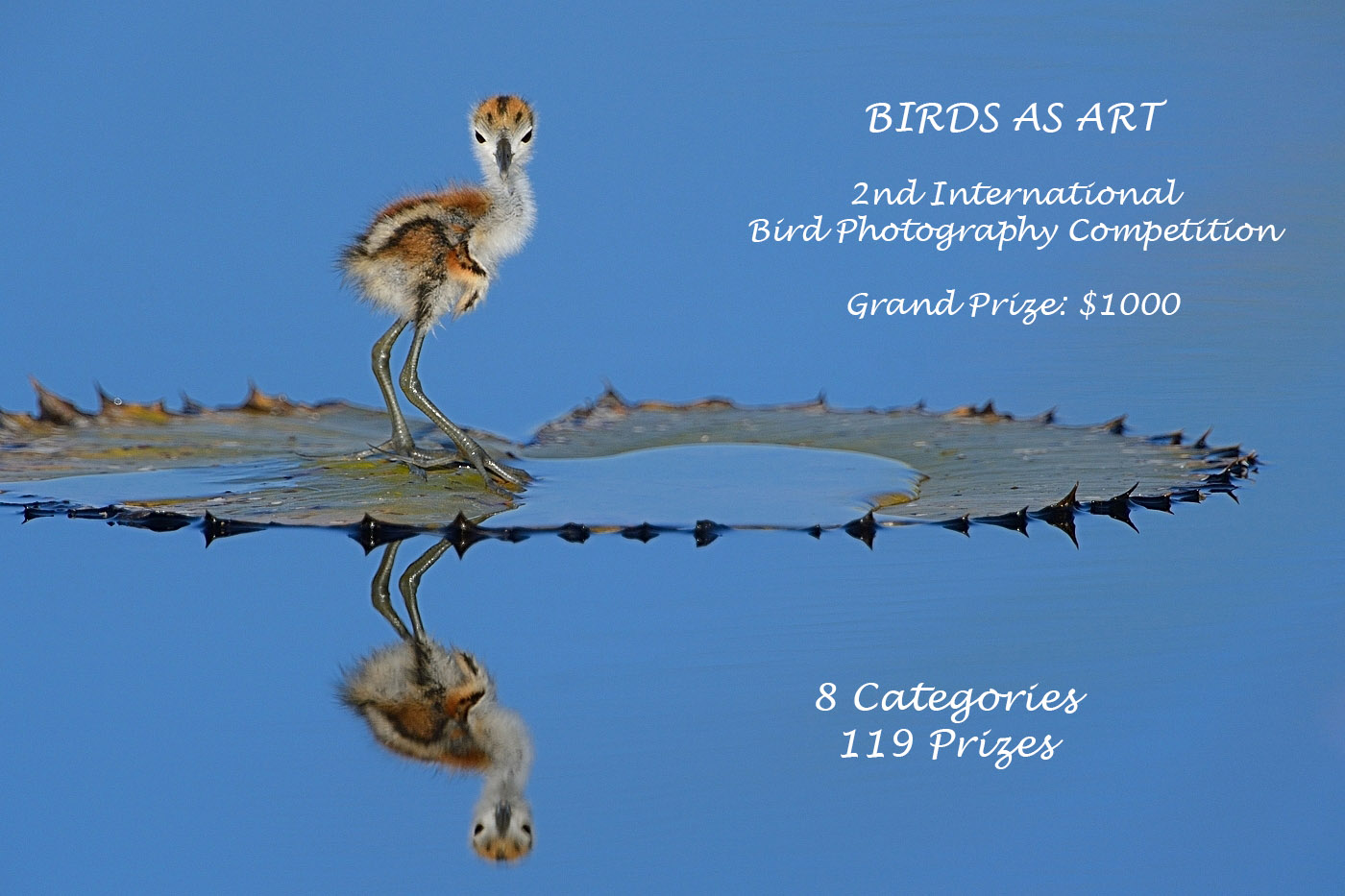
|
BIRDS AS ART 2nd International Bird Photography Competition
The December 21, 2013 closing deadline is fast approaching.
Learn more and enter the BIRDS AS ART 2nd International Bird Photography Competition here. Twenty-five great prizes including the $1000 Grand Prize and intense competition. Bring your best.
Support the BAA Blog. Support the BAA Bulletins: Shop B&H here!
We want and need to keep providing you with the latest free information, photography and Photoshop lessons, and all manner of related information. Show your appreciation by making your purchases immediately after clicking on any of our B&H or Amazon Affiliate links in this blog post. Remember, B&H ain’t just photography!




Amazon
Everyone buys something from Amazon, be it a big lens or deodorant. Support the blog by starting your search by clicking on the logo-link below. No purchase is too small to be appreciated; they all add up. Why make it a habit? Because I make it a habit of bringing you new images and information on an almost daily basis.
Typos
In all blog posts and Bulletins feel free to e-mail or leave a comment regarding any typos, wrong words, misspellings, omissions, or grammatical errors. Just be right. 🙂
IPT Info
Many of our great trips are filling up. You will learn more about how to make great images on a BAA IPT than anywhere else on the planet. Click here for the schedule and additional info.

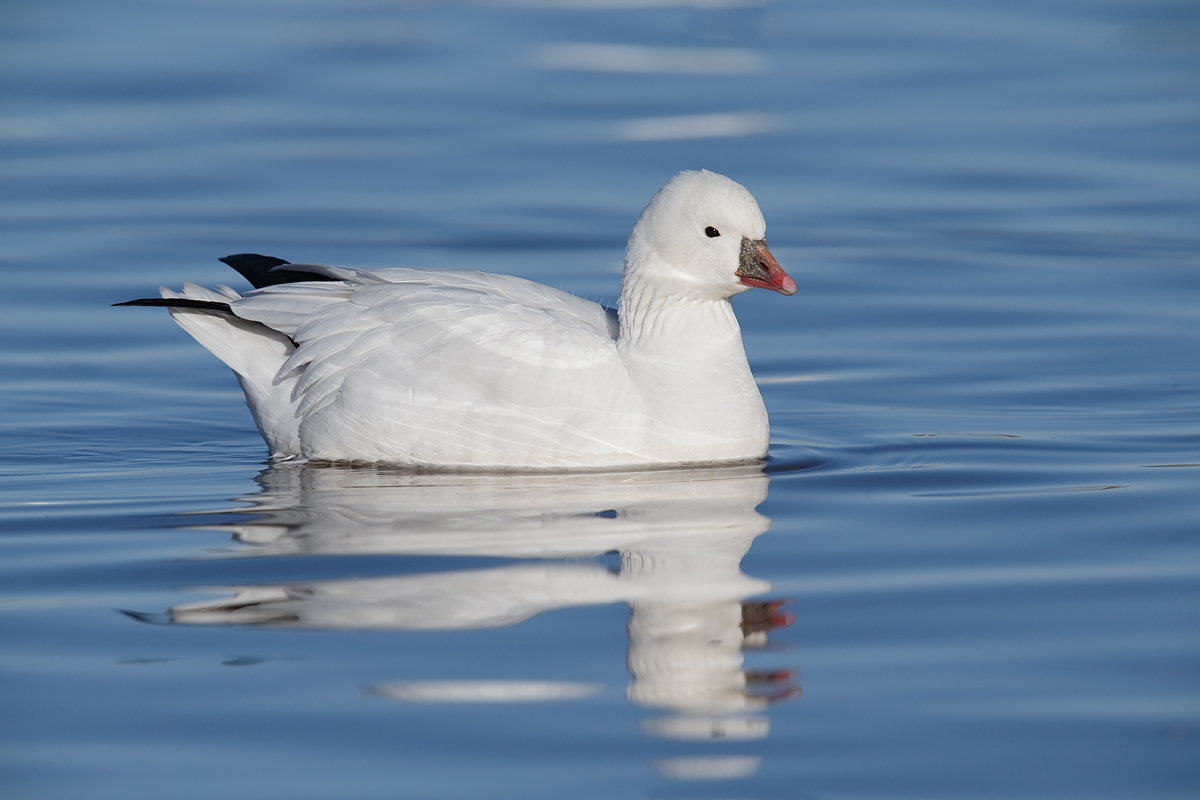
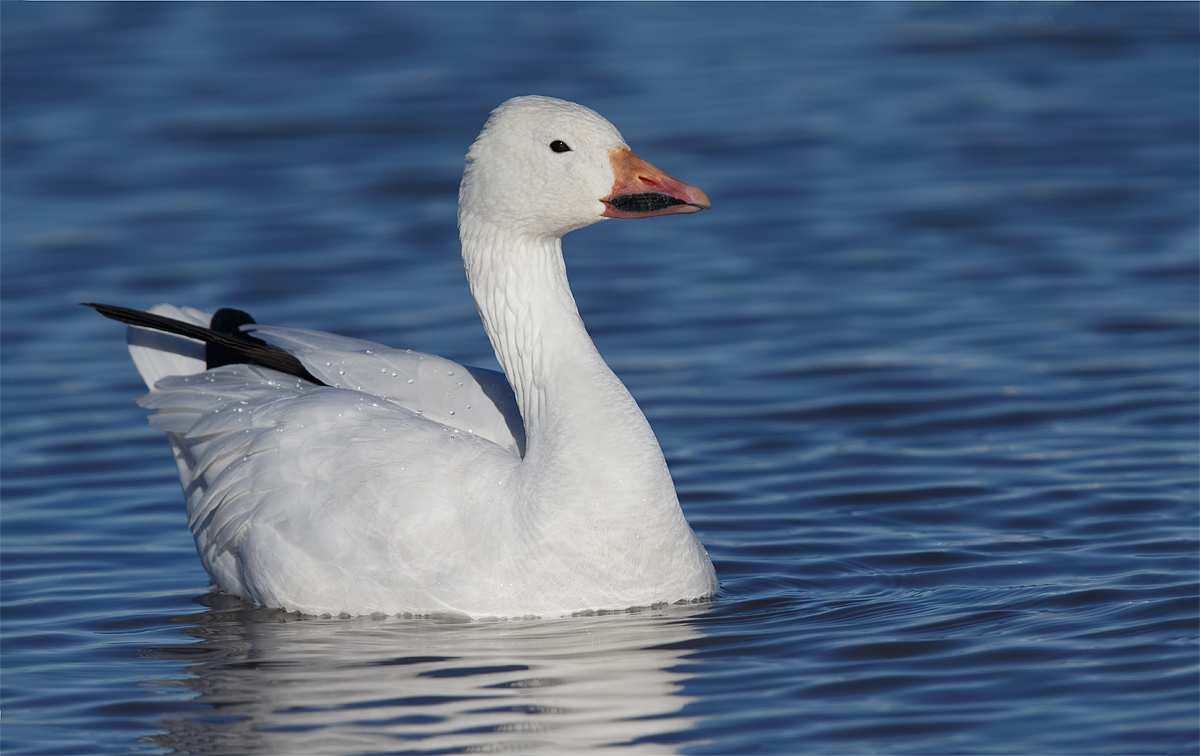
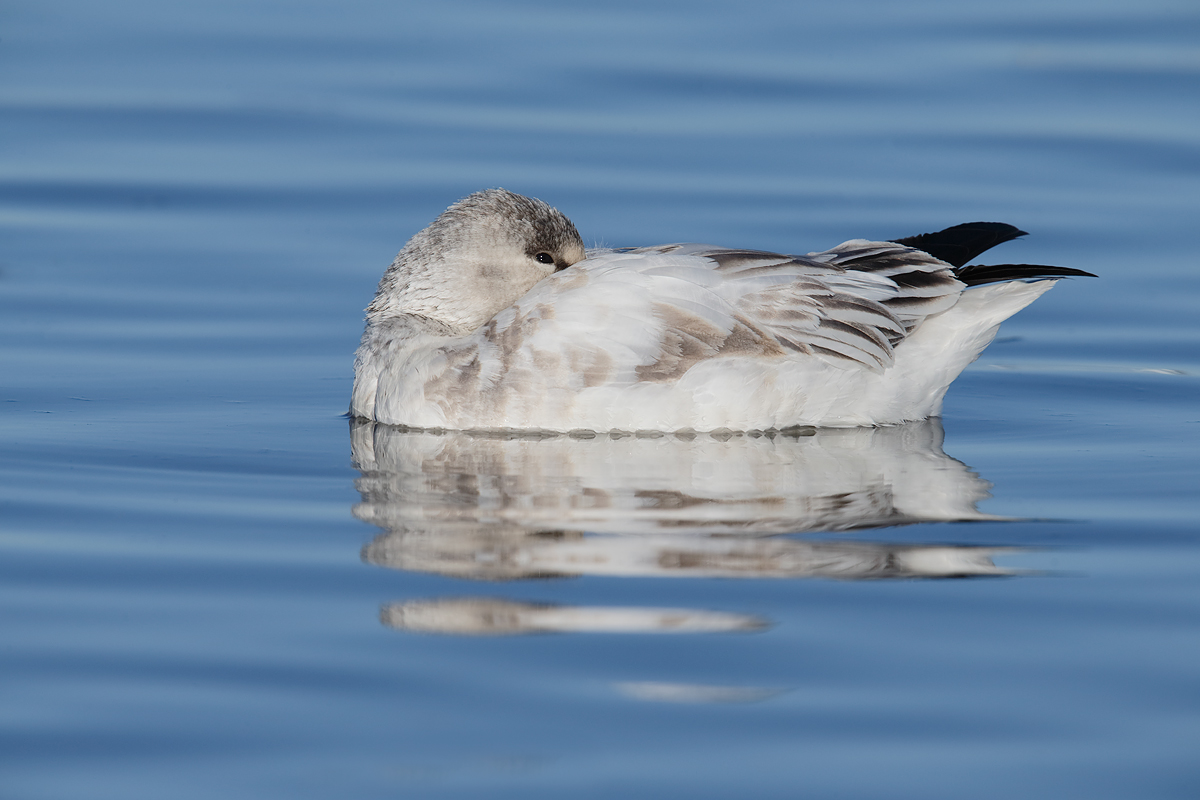
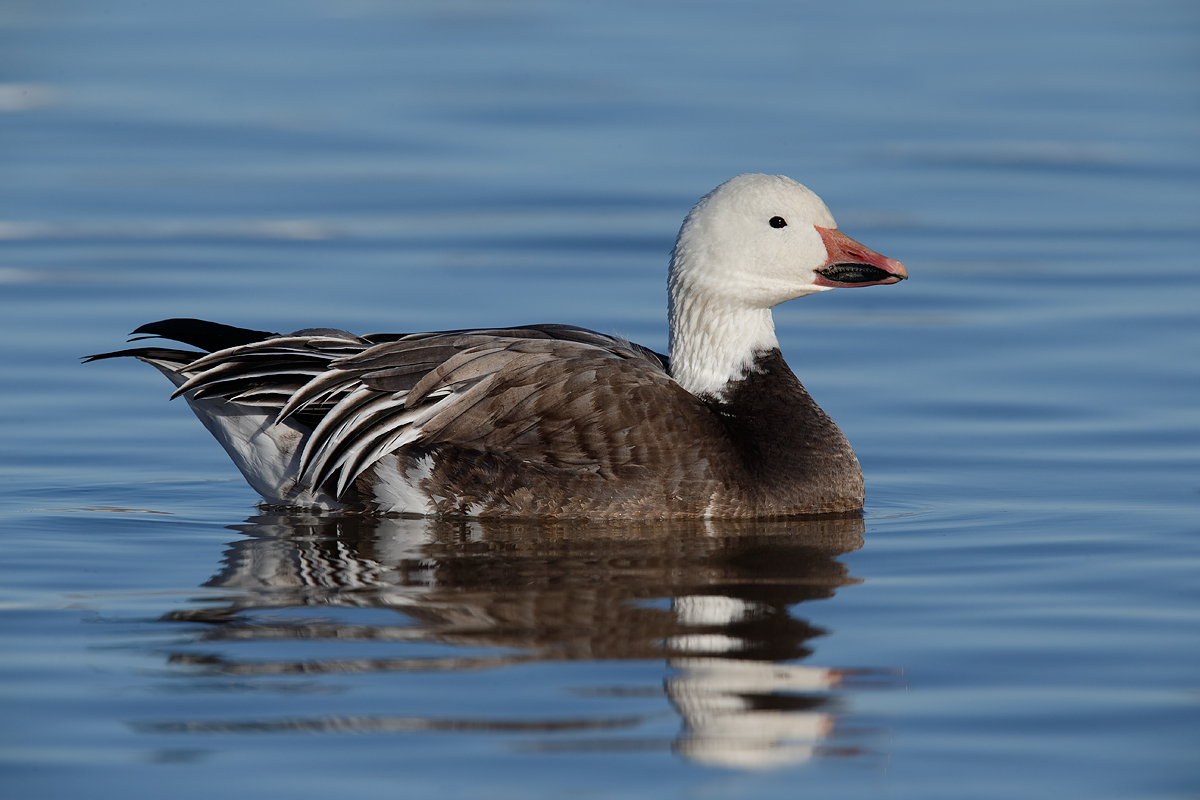
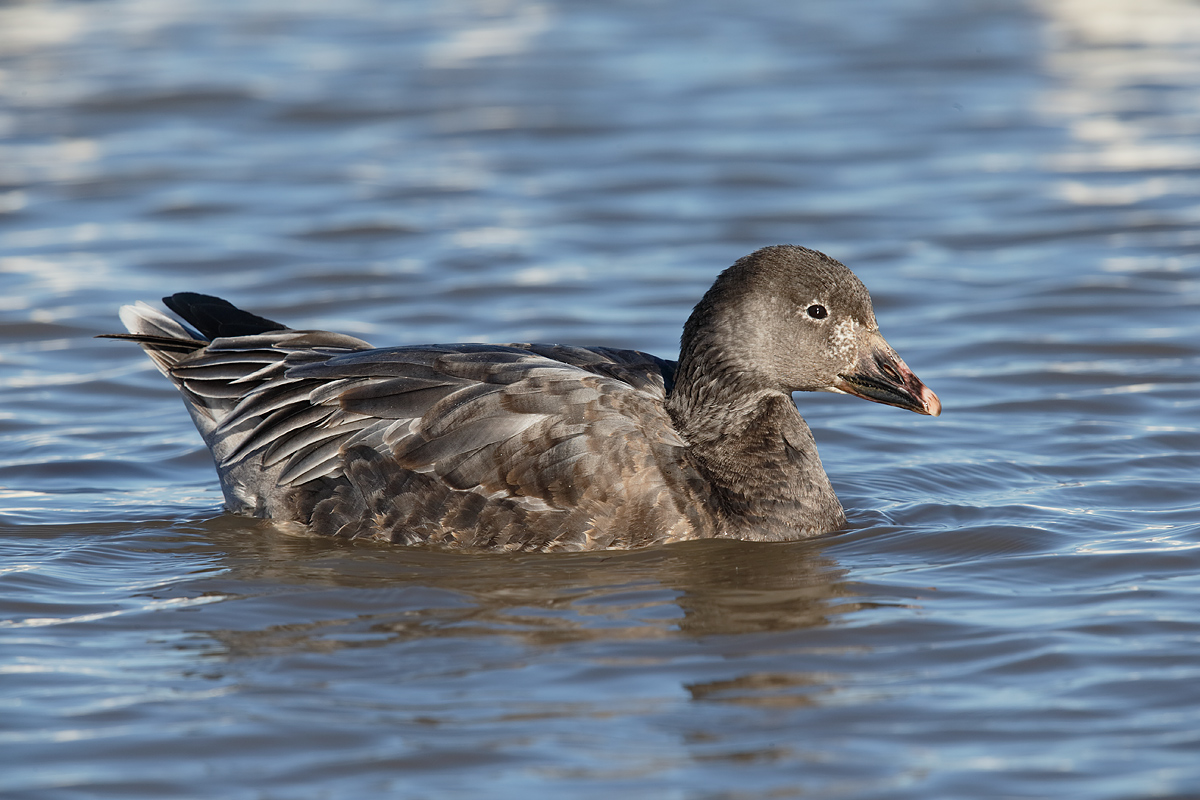













The message of one article on gene analysis in Snow Geese I read was that one blue gene and one white gene may result in anything between almost blue and almost white birds, but many of them will of course be clearly intermediate in colour, often at least with white below. If that is true, we will have to abandon the dominant/recessive model and more think of it as intermediate inheritance. From one aspect, blue will still be dominant because blue x white will have some blue colour but the will (never ever????) have 100% blue appearance. That could also explain the report of two white birds having blue offspring – the parent birds have been “almost white” intermediates.
I love geese! We are lucky in the Sacramento Valley to have such an abundance of both Snow and Ross’s Geese. Can’t wait to join you one of these years in New Mexico as we just cannot compete for the scenery here in California! We were lucky enough last year to get a chance to photograph a Blue Ross’s Goose that hung out for several days at the viewing platform of the Colusa NWR. It caused a nice stir here and was oh so neat to see. Hoping for its return this year. Glad to see you are having such a nice trip again this year.
Thanks and great plan! artie
All the Geese are beautiful birds with great detail, framing, exposure and contrast to background.
The adult Snow Goose is striking white with beautiful detail in the feather texture.
My favorite is the juvenile Blue Goose, again beautiful detail in the feather texture and the range of coloration.
When you expand these images, the depth of texture and coloration is remarkable.
Thank you Arthur.
Jim Amato
Thank you Jim! artie
Art,
The white phase to my knowledge is homozygous recessive and two white birds wont produce any blue offspring. btw the first sno geese arrived in UK already …pretty rare on this side of the water.
Regards Gerhard
Thanks for correcting me. If you can shed any more light on the genetic situation with the color morphs, please expound; i. e., what is a homozygous recessive? artie
Sorry for the late reply, was out in the field chasing birds.
It is quite simple. If both parents are white birds all their offspring will be white as well.
Basically there are two different type of dark birds – one of them would be pure/homozygous dark birds which will produce only dark birds when paired with a white bird.
Then there so called split or heterozygous birds which are dark (because this is the dominant factor) but will produce 50% white offspring when paired with a white bird .
see also http://en.wikipedia.org/wiki/Dominance_%28genetics%29
Luckily the camera doesn’t care about the genetics …well if we see on the exposure of Art’s pictures the photographer has to do 🙂 .
Cheers Gerhard
I could be wrong, because I don’t know about this particular situation, but I believe you have it backwards (i.e. offspring of white birds can be either white or blue, but offspring of blue birds will always be blue).
The genotype (genetic makeup) of each animal consists of two genes for any given trait. Theoretically, if only one gene controls color in the goose situation, then a bird could have two genes for white (homozygous for white), one white/one blue gene (heterozygous), or two genes for blue (homozygous for blue).
Because white is the dominate gene, and blue the recessive, any bird with at least one white gene will have a white phenotype (observable characteristics). Which is why most of the geese are white. For a bird to be blue, it must have two genes for blue.
When birds mate, each parent will pass on one of their genes for each trait. So a bird that is homozygous for white will always pass on a white gene and all of the offspring will be white. A bird that is homozygous for blue will always pass on a blue gene. So if that blue bird mates with another blue bird, the offspring will always be blue. If it mates with a homozygous white bird, the offspring will be white, but will carry the recessive blue trait as well (heterozygous).
If a blue bird mates with a heterozygous bird, the offspring will have a 50% chance of being blue or white. And if two heterozygous birds mate (both appear white but contain the blue gene), there is a 25% chance that an offspring will be blue (receive the blue gene from both parents).
Kevin,
I could well be wrong …never worked with snow geese – but with a couple of other species which have colour morphs.
I went with the literature like
http://www.ferris.edu/card/Animals/Herbivores/SnowGoose.pdf
http://www.allaboutbirds.org/guide/snow_goose/lifehistory
I just came across the genetic of the species while looking for some research about color-morphs.
Regards from UK
Gerhard
Artie, I actually shot a Blue Ross’s during our trip last year.
1. A 1/3 slower shutter is needed in the juvenile Snow Goose scene because it would meter medium tone but there is whites to expose for you’d need to add light by slowing your shutter.
2. The adult Blue Goose scene would meter a medium tone and to have a white head and detail in the goose, adding 1/3 stop of light is needed.
3. The juvenile Blue Goose scene needed +1-1/3 stops more light to expose the goose properly because the overall scene was lighter than middle tone.